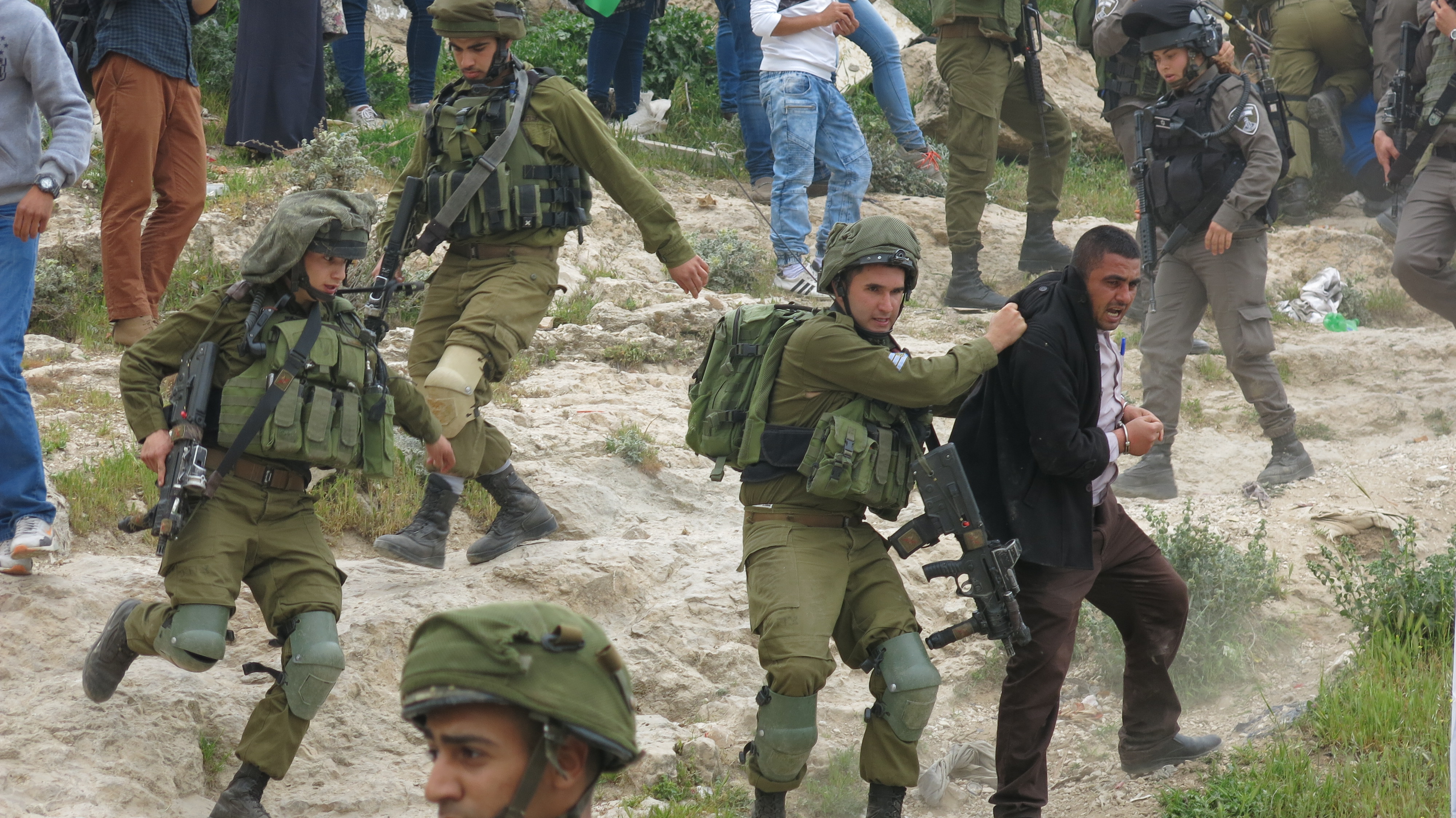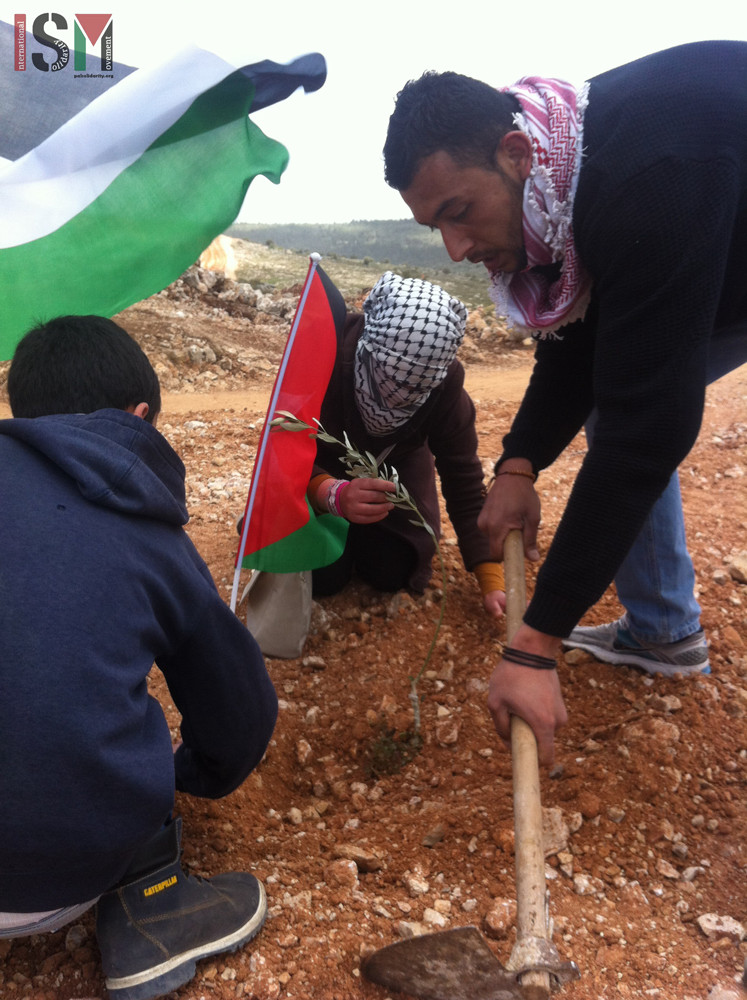Tag: Land Day
-
Four Palestinians arrested during Land Day action in al-Khalil
31st March 2017 | International Solidarity Movement, al-Khalil team | Hebron, occupied Palestine On Thursday the 30th March, four prominent Palestinian activists were violently arrested by Israeli forces following an olive tree planting action marking the 41st Land Day demonstrations in al-Khalil. ISM activists joined demonstrators who had gathered near the Palestinian house now occupied…
-
Big turn out and high spirits at Wadi Fukin Land Day olive tree planting and protest
31th March 2015 | International Solidarity Movement, al Khalil Team | Wadi Fukin, Occupied Palestine On Monday March 30th about two hundred people commemorated Land Day in the village of Wadi Fukin. The protest, which involved planting olive trees was a response to Israeli theft of village land. After midday prayer around two hundred Palestinians and internationals…
-
Nabi Saleh Land Day Protest met with extreme violence and M16 live ammunition
30th March 2015 | International Solidarity Movement, Ramallah team | Nabi Saleh, Occupied Palestine On the 28th of March 2015, close to 200 protesters from all over the West Bank gathered in Nabi Saleh to protest the occupation in commemoration of Land Day. The protest was met with extreme violence as the Army and Border Police fired…



